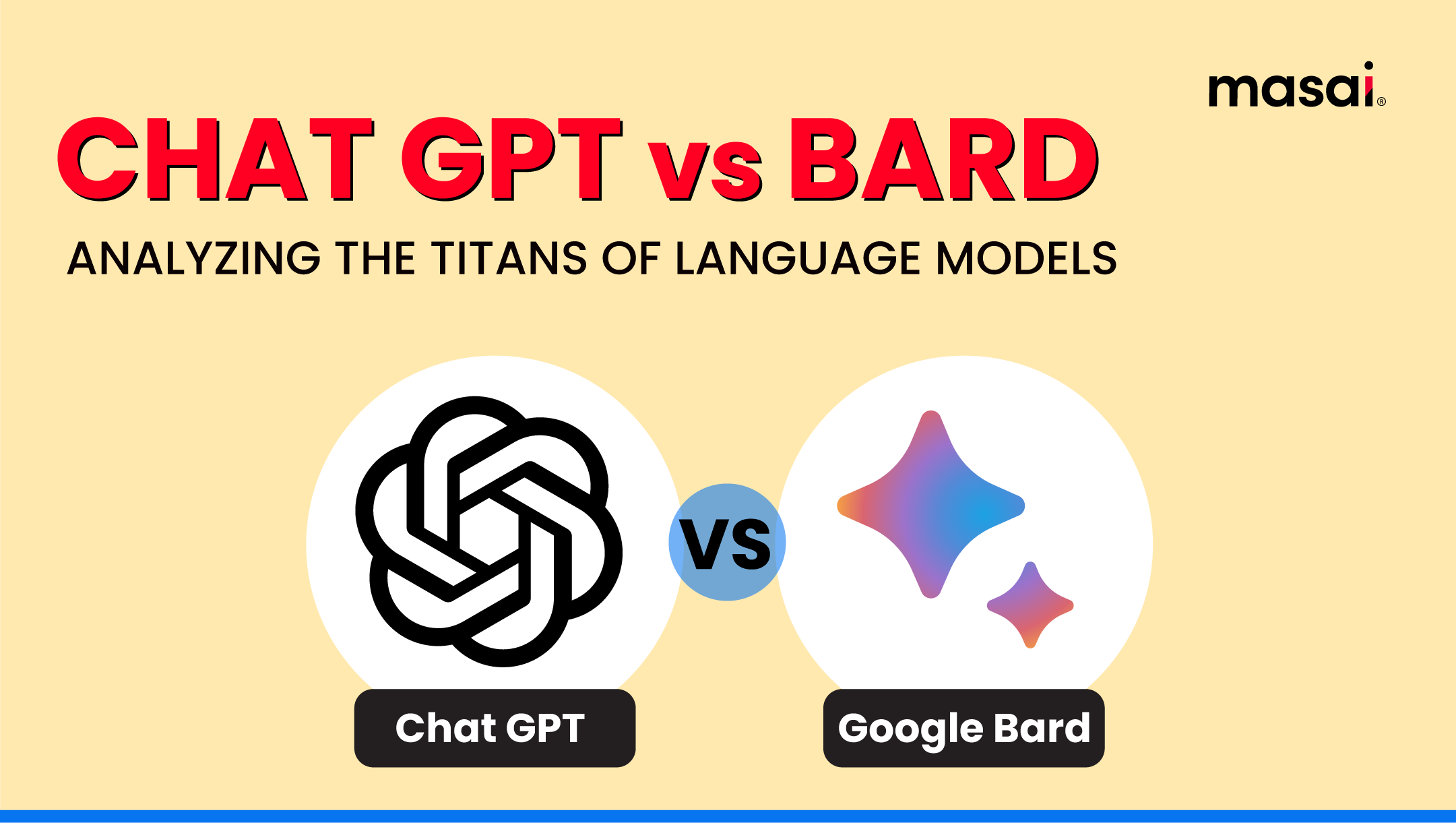ChatGPT vs Bard: A Breakdown of Large Language Models
Both ChatGPT and Bard are like the superheroes of language models, and they have shown great potential in natural language processing.

Authored by: GM Lochani

I am all about bridging that gap between what you learn in books and what you need to succeed in real life. I've been in the realm of soft skills and behavioral training for 7 years now. With a B.Com and an MBA under my belt, I've made it my mission to help college graduates prosper in the corporate world.
Have you heard of the dynamic duo of the AI world taking the text generation world by storm? Meet ChatGPT and Bard, the Batman and Superman of generative AI. These two language models have been causing quite a stir in the tech community with their impressive text-generating powers.
So what makes them different from each other? Let's break it down!
ChatGPT - The Big Brother
First up, we have ChatGPT - the big brother of language models, developed by the famous OpenAI. Think of it as a language model that knows all the right words to say to impress you. It has been trained on an enormous amount of data, making it one of the most powerful large language models in existence. With advanced prompt engineering features, ChatGPT can be used for a variety of applications, including business use cases.
Bard - The Cool New Kid
On the other hand, we have Bard - the cool new kid on the block, developed by Google. It may not have the same level of experience as ChatGPT, but it's got some serious talent. Bard has been trained on a smaller dataset, but it's focused on a particular domain, like a master of one. For example, it's great at generating text in the science fiction genre.
Gemini - Bard's Latest Upgrade
Google has recently released a new version of the Bard language model, with the integration of Gemini, which includes some exciting updates. This has improved its performance on a wide range of tasks, including language translation and summarization. This new release also includes a larger dataset, which should help improve the model's accuracy and performance even further.
Training and Capabilities
While both models are based on the transformer architecture, there are some key differences in their training and capabilities. ChatGPT has been trained on a much larger dataset than Bard, making it more capable of generating text on a wide range of topics. Bard has been trained on a smaller dataset that is more focused on a particular domain, such as science fiction.
The Power of Prompt Engineering
Another difference between the two models is their prompt engineering capabilities. ChatGPT has advanced prompt engineering features that allow it to generate text based on specific prompts. This means that ChatGPT can be used for a variety of applications, including business use cases. For example, ChatGPT can be used to generate product descriptions, social media posts, and even entire articles. It's like having your own personal AI content generator at your fingertips.
Bard's Rising Star
Bard, on the other hand, has fewer prompt engineering capabilities, making it less suitable for business use cases. However, Bard is like a rising star in the research community, and it's a model that many researchers are excited about. In fact, Microsoft has also developed a language model called Palm2 that is based on the Bard architecture. This shows that Bard has the potential to become a major player in the field of natural language processing.
Future Developments and Concerns
Looking to the future, there is a lot of excitement around the development of large language models like ChatGPT and Bard. The next generation of language models, GPT-4 and GPT-3.5, are even more powerful than their predecessors. These models have even more advanced capabilities, such as the ability to generate text that is indistinguishable from human-written text. However, there are also concerns about the ethical implications of using large language models like ChatGPT and Bard. For example, there are concerns about bias in the training data and the potential for these models to be used for malicious purposes, such as creating fake news or deepfakes. As a result, there is a growing need for responsible AI practices and ethical guidelines in the development and use of large language models.
Despite these concerns, it's clear that language models like ChatGPT and Bard have enormous potential to transform industries and change the way we interact with technology. The applications for these models are nearly endless, from content generation to language translation to virtual assistants.
Conclusion
In conclusion, both ChatGPT and Bard are like the superheroes of language models, and they have shown great potential in the field of natural language processing. While ChatGPT is like a text-generating wizard who can do it all and has more advanced prompt engineering capabilities, Bard is like an AI specialist who's a master of one and has shown impressive results in research. As language models continue to evolve, it's clear that they will become an increasingly important tool for businesses and researchers alike. So, let's get excited about the future of language models and see what they can do!

